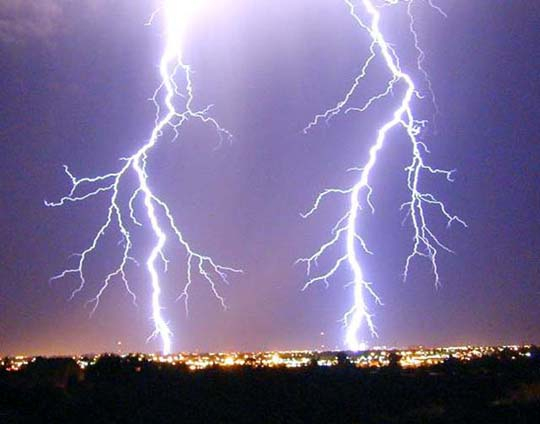A Rutgers staffer lost her home to lightning. Here's what you should know.
I’ll never forget that day, driving up the street, getting closer to my house in Morris County and seeing police cars, fire trucks and lots of people.
“Wow.” I said to my husband, Mike. “I wonder what happened,” never giving a thought that these emergency vehicles were there for us. That’s when Mike looked up and saw our pane-glass attic windows opened and realized that all those firefighters in the street were not there for one of our neighbors but to make sure that our house did not burn to the ground.
All I could think of was my 18-year-old son, Padraig. I had talked with him a few hours earlier. He sounded a little strange but told me he wasn't feeling well and hadn't gotten a lot of sleep. I chalked it up to his being alone for a week while my husband and I were at the shore.

I jumped out of the car and noticed a friend standing in the road near one of the three fire trucks parked on the side of our 1913-built house with its now partially gutted roof, broken windows and blackened clapboard. Frantically I asked, “Where is Padraig?”
Just as my friend was about to answer, I saw my barefoot son standing in the road staring blankly. “What happened?”
“Fire,” he said. “Our house was struck by lightning.”
“Lightning,” I reiterated, looking up at the clear blue sky and bright sun. “Our house was struck by lightning?”
My son, who had been awoken by a neighbor banging on the door after seeing smoke, had been watching the firefighters when we had called from the highway but hadn’t wanted to frighten us. He knew how anxious I could be about thunderstorms.
For almost a decade – working at Saint Barnabas Medical Center in Livingston – I witnessed seriously injured people brought into the hospital’s burn unit after they were struck by lightning while out camping, playing baseball, at the beach or just walking across a college campus. And, of course, there were those who unlike my son were unable to get out of a burning house in time and were scarred for life if they were lucky enough to survive.
“Lightning seems not to get a lot of respect,” said Keith Arnesen, a meteorologist with the Rutgers School of Environmental and Biological Sciences. “Even though it injures and kills many individuals each year, people don’t think about it in the same way they think about hurricanes and tornadoes. Lightning strikes are covered by the media on a local level when the football player in Wisconsin or the bather at the Jersey shore is struck. But it is something that doesn’t get as much national attention.”
This is despite the fact that lightning, until 2011 -- one of the most active and deadly years in the United States for tornadoes – has been second only to flash flooding in the number of weather-related deaths each year. According to the National Weather Service, about 400 people are struck by lightning in the United States annually. Most survive, but about 58 people are killed each year.
“I think the problem has been that people tend to react too slowly when they hear distant thunder,” said Arnesen who teaches undergraduate courses in meteorology and climatology. “They think they have more time to get to safety than they actually do.”
Lightning can strike, Arnesen explained, even when a thunderstorm is miles away when there is no rain and blue skies.
“There have been instances when lightning strikes seem to have just come out of nowhere,” he said. “This is because lightning can travel horizontally from a cloud 10 miles away and then arc down. It appears as if it is coming down from a totally clear sky.”
In our case, the bolt of lightning that hit our house resulted from a quick-moving storm that produced a darkened sky, high winds, hail and a quick downpour. The strike bypassed the 85-foot tall pine trees surrounding the back of our house and hit a defunct metal junction box near the attic,. The air at that point would have been heated to 50,000 degrees Fahrenheit, hotter than the surface of the sun, according to the National Weather Service.
While powerful thunderstorms -- abundant in July and August – provide cool relief to often hot, muggy, sweltering weather conditions, their hazardous effects should not be underrated, Arnesen said.
“If you are outside and hear thunder, get indoors,” he said. “If you are inside, stay away from open windows, get out of the shower, hang up the telephone and wait 30 minutes after hearing the last rumble of thunder before venturing back outside.”
For those stuck in the great outdoors, the National Weather Service recommends finding a low spot away from tall isolated trees, telephone poles and metal fences.
It took 14 months for our house in Dover to be put back together while we lived in both rentals and hotels. Now, four years later, with a renewed sense of both fear and respect every time I hear a rumble of thunder or see a flash of lightning, I find myself anxiously waiting out these summer storms hoping that lightning doesn’t strike twice.